Bose QuietComfort Earbuds vs. Sony WF-1000xM3: Noise-cancelling earbuds face-off
Which of these noise-cancelling wireless earbuds is the better model?
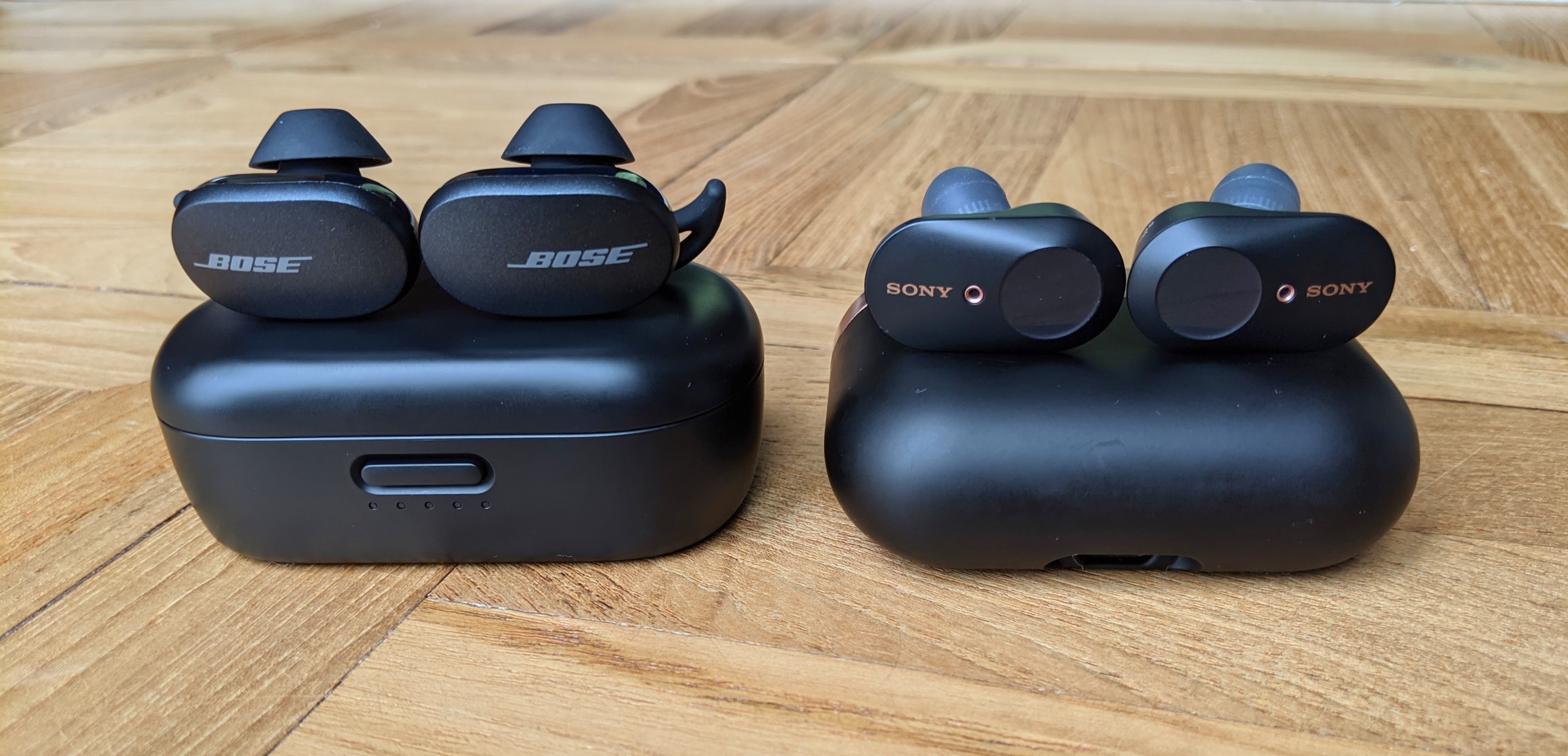
If you’re looking for noise-cancelling wireless earbuds that aren’t the AirPods Pro, there are some incredible alternatives out there such as the Bose QuietComfort Earbuds and Sony WF-1000xM3.
Bose’s newest release has earned favorable reviews from top tech publications, including Laptop Magazine, and we have awarded it a 4.5 out of 5-star review and Editor’s Choice badge. Sony’s flagship earbuds have been on the market for more than a year and still rank high among audiophiles who want excellent noise neutralization and Sony sound in a tinier package.
- Best noise-cancelling headphones in 2021
- Best Prime Day headphone deals still up for grabs
- Best cheap headphones deals
Both models are considered some of the best wireless earbuds money can buy, though you might want to consider one over the other based on preference and budget. Here is an in-depth look comparing the Bose QuietComfort Earbuds and Sony WF-1000xM3 to determine the better noise-cancelling solution.
Bose QuietComfort Earbuds vs. Sony WF-1000xM3: Price
Bose and Sony are two brands that carry premium price tags. The WF-1000xM3 originally launched at $230, but it has seen some generous discounts over the past few months, going for as low as $178 during Prime Day and could sink further over Black Friday. This is an incredible value when looking at the spec sheet alone.
The QuietComfort Earbuds are more expensive at $280. By comparison, this is $50 higher than the standard price of Sony’s earbuds and $30 more than the AirPods Pro. Granted, those familiar with Bose products know that the high cost reflects performance, which is often superb.
All things considered, the WF-1000xM3 looks to be the more enticing purchase (if on sale) and will get you more bang for your buck.
Winner: Sony WF-1000xM3.
Sign up to receive The Snapshot, a free special dispatch from Laptop Mag, in your inbox.
Bose QuietComfort Earbuds vs. Sony WF-1000xM3: Specs compared
| Header Cell - Column 0 | Bose QuietComfort Earbuds | Sony WF-1000xM3 |
|---|---|---|
| Price | $279.95 | $230 |
| Colors | Triple Black and Soapstone | Black and Silver |
| Battery life (rated) | 6 hours, 18 hours (with charging case) | 6 hours, 24 hours (with charging case) |
| Size and weight (per bud) | 1.5 x 1 x 1.1 inches; 0.3 ounces | 1.5 x 2.0 x 0.6 inches; 0.3 ounces |
| Size and weight (charging case) | 3.5 x 2 x 1.3 inches; 2.7 ounces | 3.2 x 2.3 x 1.3 inches; 2.8 ounces |
| Durability | IPX4 (water and sweat resistance) | Unknown |
| Special features | Adjustable active noise cancellation, Active EQ technology, Transparency Mode, Bluetooth 5.1, Self Voice calling mode, touch controls, wireless charging | Active noise cancellation, transparency mode, companion app with customizable EQ, DSEE HX upscales compressed digital music files, NFC connectivity, touch controls |
Bose QuietComfort Earbuds vs. Sony WF-1000xM3: Design
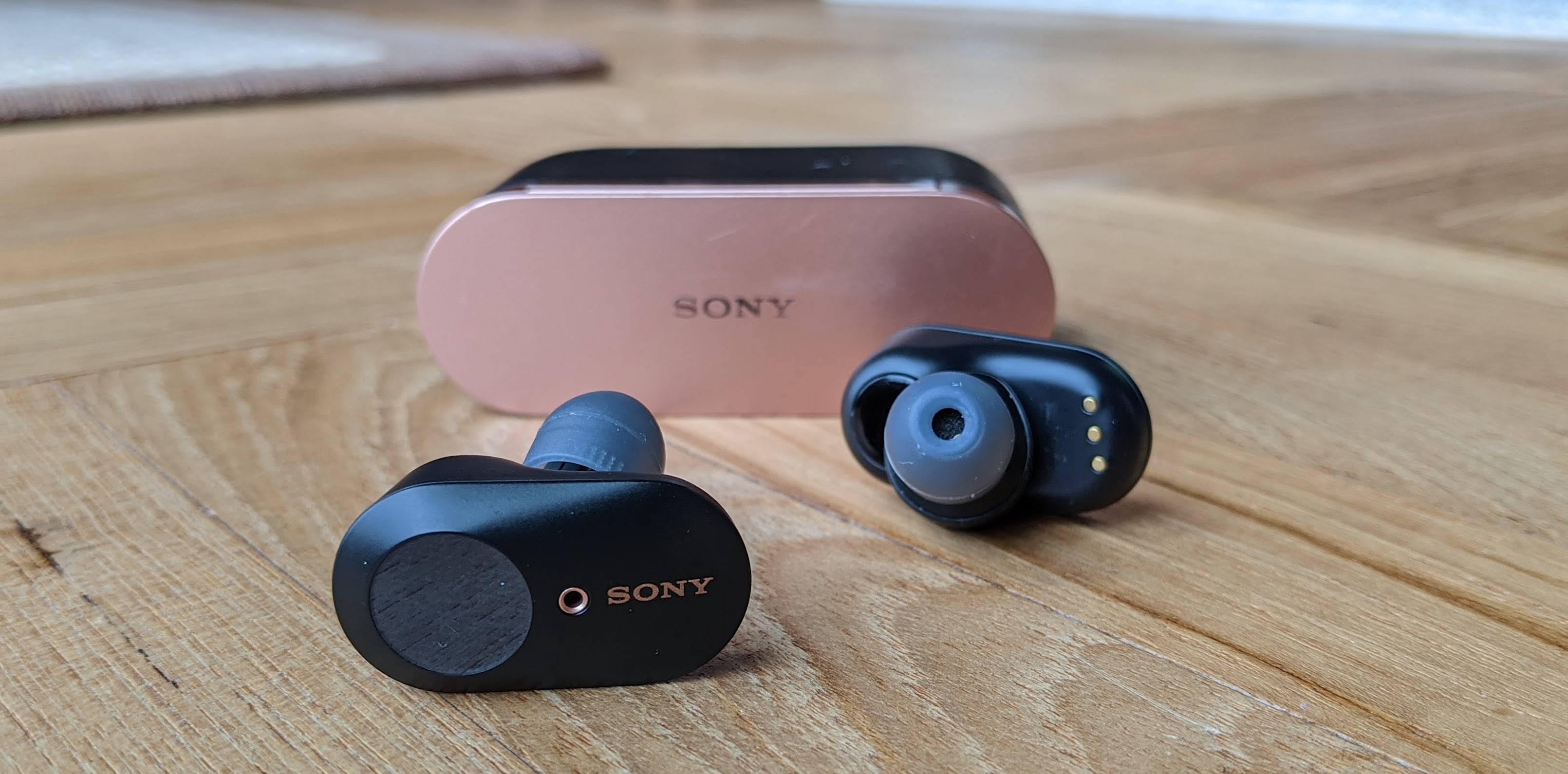
These are some heavy, bulky earbuds. Which pair are we describing? Both. We get that the large designs were necessary to house their respective high-powered circuitry (e.g. ANC, processors, sensors), but neither set of earbuds looks flattering to wear.
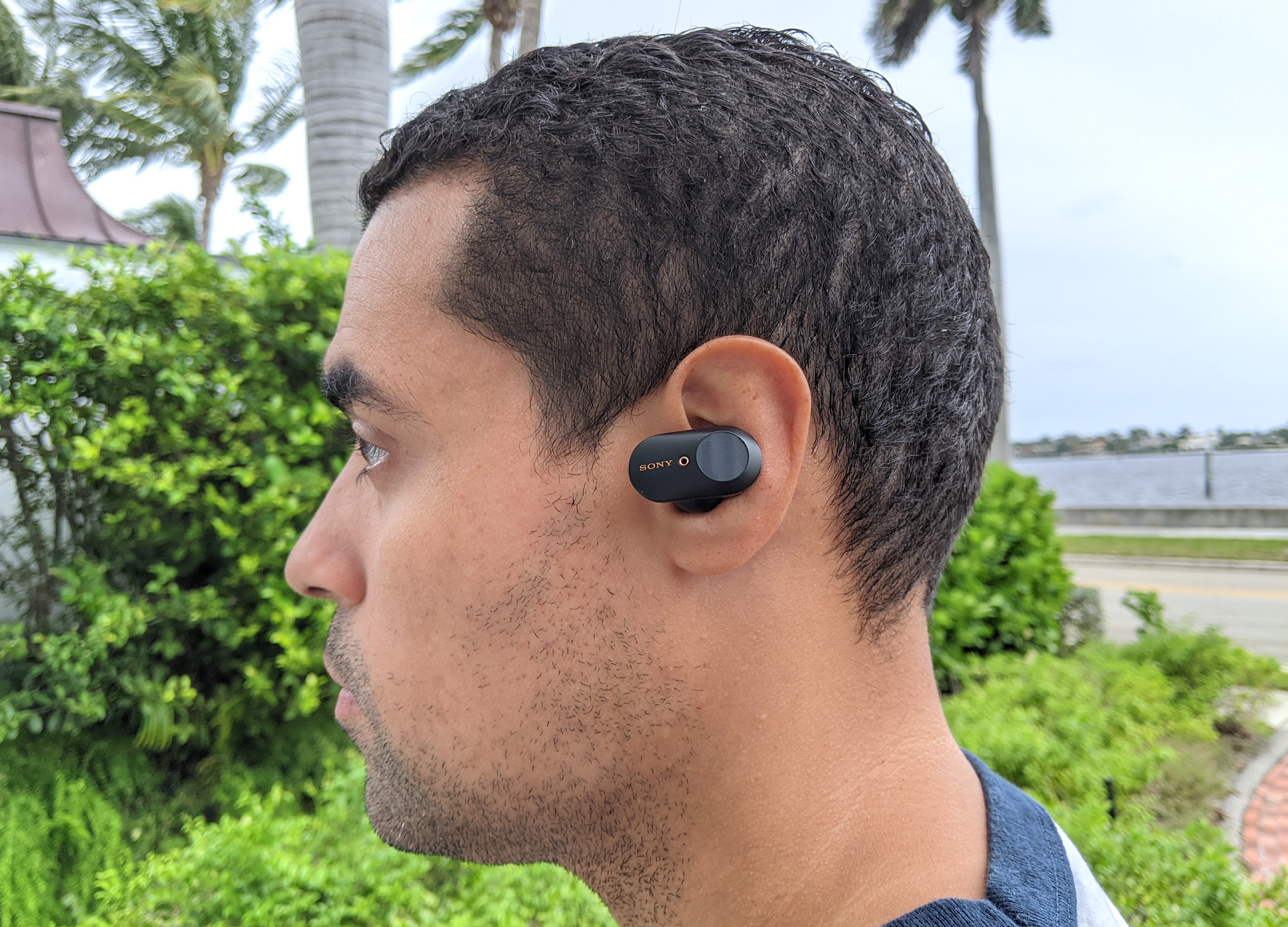
For argument’s sake, the WF-1000xM3 is the more attractive selection, thanks to pronounced details like the copper accents and circular touch panels. Craftsmanship is solid, so you won’t fear the buds breaking when they hit the concrete. But they do scuff easily, much like Bose’s buds.
I do love the angled sound port, which makes sliding the buds into your ears convenient. The bundled memory foam tips also ensure the buds stay put; slippage occurs when using the gel tips. You’ll get some good comfort out of the WF-1000xM3 as well, though listeners with a low pain threshold may feel the buds weighing down their ears after an hour of listening.

The QuietComfort Earbuds seem too minimalist for their own good, lacking any pizzazz to draw in fashion-forward audiophiles. Signature design elements like the laser-printed logo and matte finish stand out, but not like the copper accents on Sony’s buds. The casing is thicker too, and can create discomfort for those with small ears. Some listeners may also feel the sound port pressing on their concha. One positive is that Bose bundles the QuietComfort Earbuds with extra sets of ear fins to establish a personalized fit.
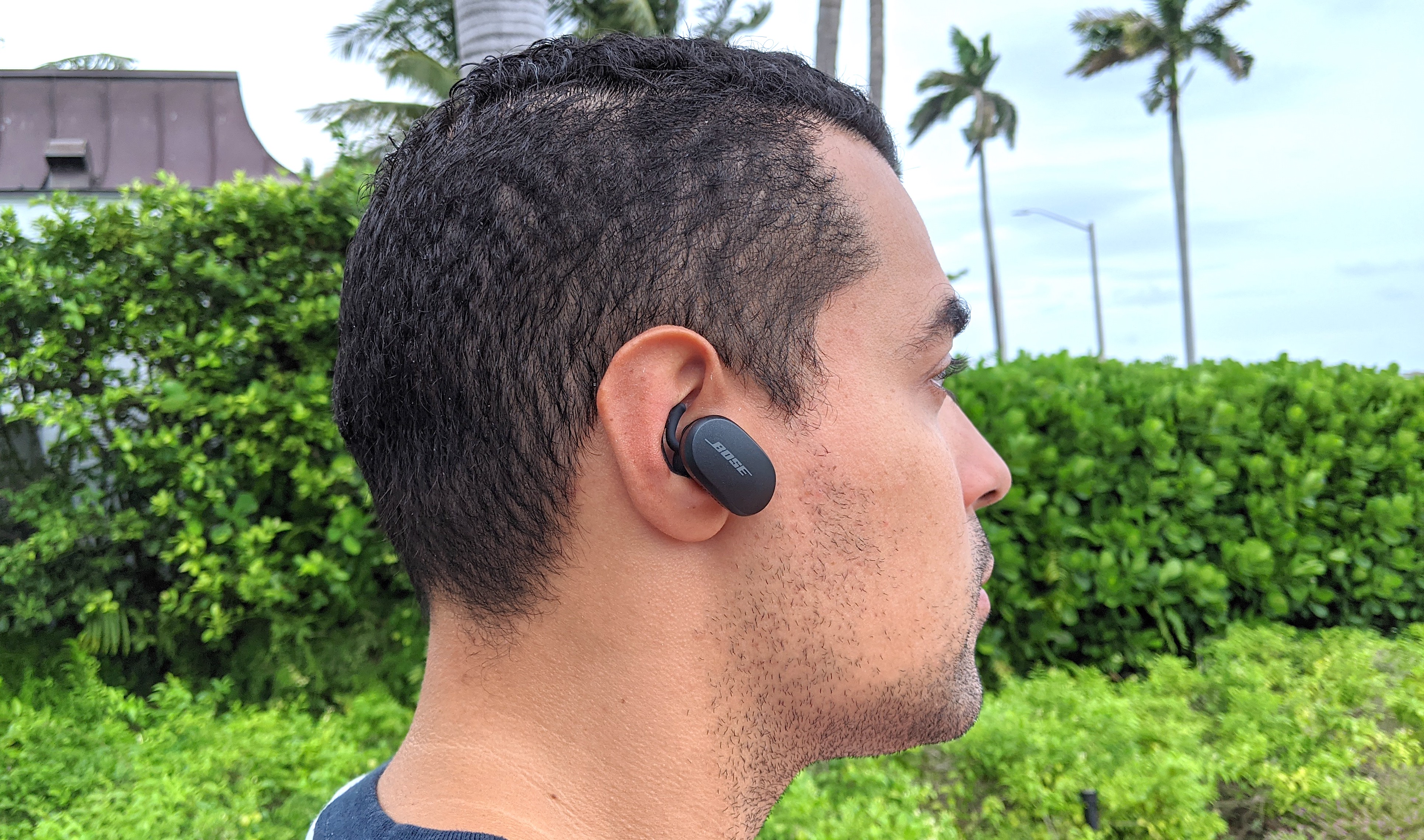
If you want portable-friendly charging cases, look elsewhere, because Bose and Sony’s offerings are huge, heavy, and wide. Personally, I find the WF-1000xM3’s charging case sleek, plus it gives off that premium cigarette holder vibe when clutched in your hand. It also feels premium with a nice rubberized finish and a magnetic lid that shuts securely and keeps the buds docked.
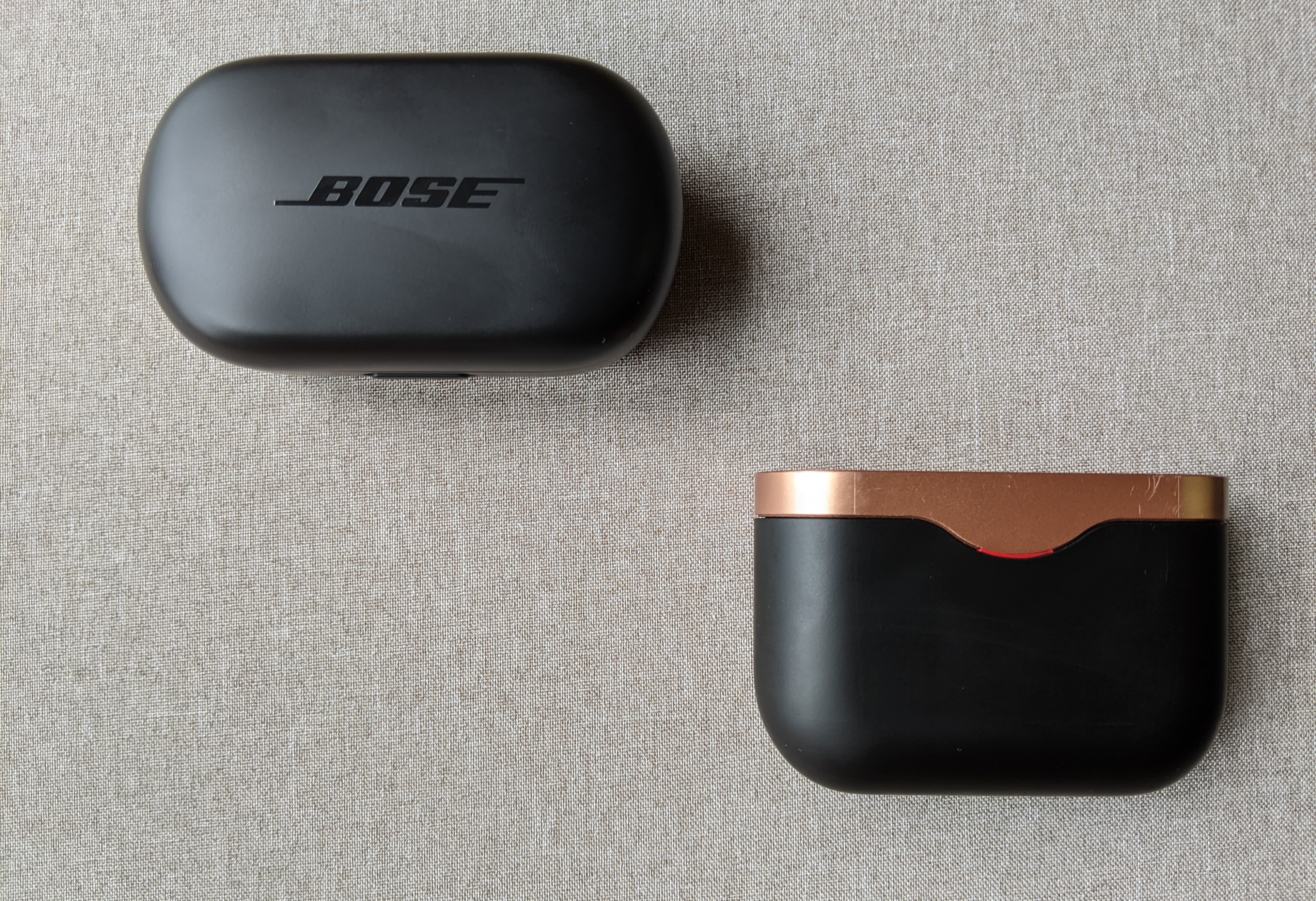
There’s isn’t much to gaze at with the QuietComfort Earbuds charging case. It’s one big hunk of plastic with a push-button on the front to open the lid and a Bluetooth button in the middle for manual pairing. The latter is much appreciated for connectivity, though the case’s overall design is just encumbering.
Winner: Draw.
Bose QuietComfort Earbuds vs. Sony WF-1000xM3: Controls
Tap gestures and motion detection make up the controls of both models. The end results aren’t pretty on either set of earbuds, but Bose makes playback and call management more tolerable.
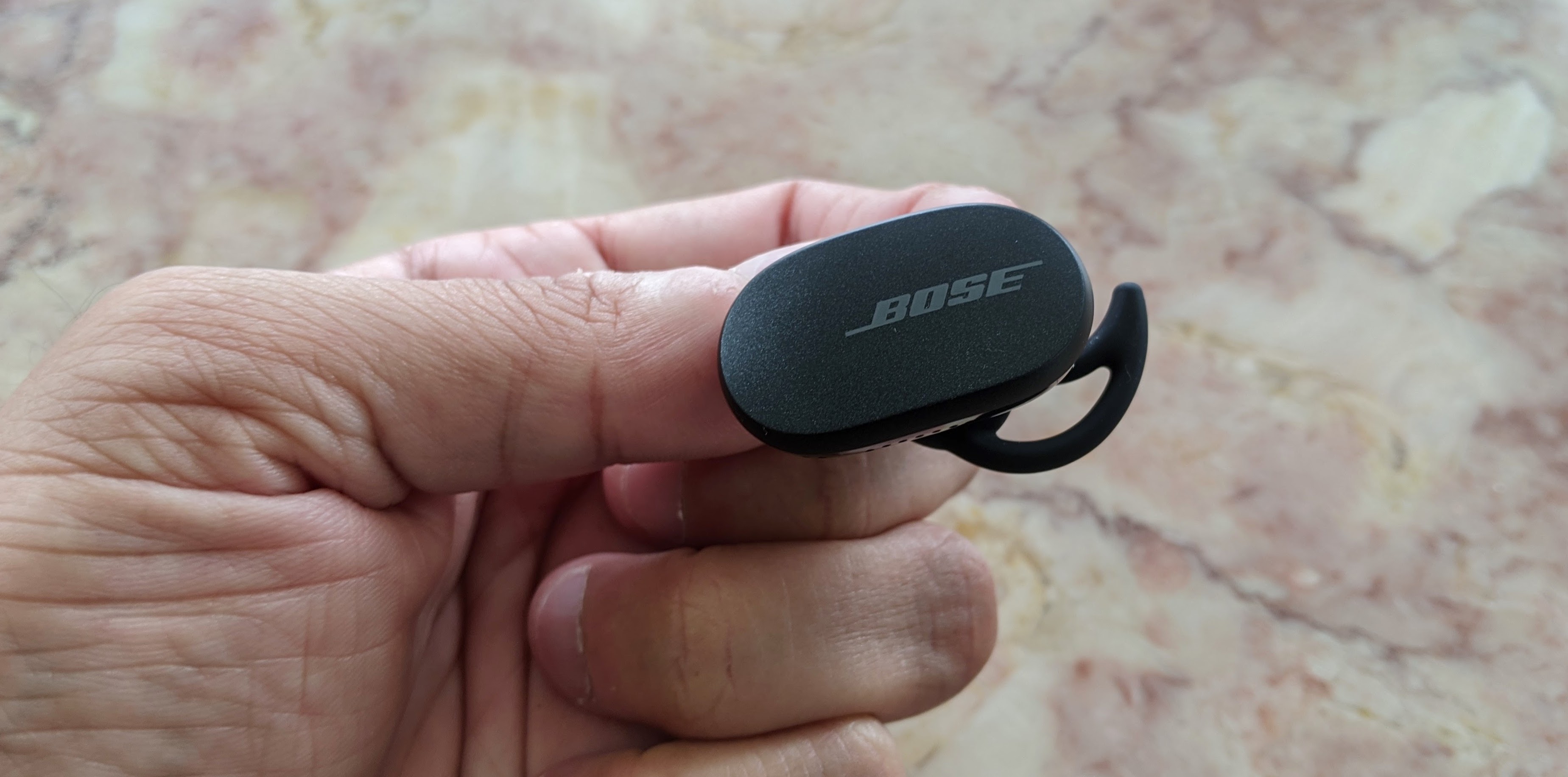
The QuietComfort Earbuds’ touch panels aren’t visible like on the WF-1000xM3, but they’re responsive. Most of the controls are programmed on the right earbud (play/pause, answer/end call, digital assistant support), while the left earbud lets you skip a track/hear battery levels or cycle enable ANC. You can only perform these actions through two-tap gestures or a long press. Why no single- or triple-tap gestures? Who knows, but we’re not too fond of the decision.
Sony makes the touch panel on the WF-1000xM3 more visible, as indicated by the protruding circle on the front. There are also more controls programmed into the buds. Unfortunately, the touch gestures work poorly, with the sensors either misinterpreting commands or not registering taps at all.

On-ear detection is more accurate on the QuietComfort Earbuds, though there is some noticeable lag (a 2-second delay) when removing or placing the buds on your ears. The feature works only half the time on the WF-1000xM3.
As for digital assistant support, you’ll be able to shoot off verbal inquiries without a hitch on either pair of buds. Siri and Google Assistant are available on the two models and operate smoothly, demonstrating great speech recognition to execute spoken commands. The WF-1000xM3 is compatible with Alexa, but the QuietComfort Earbuds grants access to Bixby and Cortana (if there are any Microsoft nerds that still use it) and have the stronger mic system.
Winner: Bose QuietComfort Earbuds.
Bose QuietComfort Earbuds vs. Sony WF-1000xM3: Active noise cancellation
For noise cancellation in true wireless form, it doesn’t get any better than these two models. Expect top-tier ANC from both of these products. However, Bose did something we thought was unimaginable by giving the QuietComfort Earbuds similar noise-cancelling performance to the industry-leading Bose 700 headphones, which is an engineering feat.
There are 10 levels of noise cancellation that can be manually adjusted, the highest level (10) blocks out external sounds across the frequency spectrum. Many times, I felt completely immersed in whatever I had playing on my MacBook Pro, be it a Spotify playlist or Netflix show, and was unbothered by the multiple disruptions taking place in the house. This included multiple front-door deliveries, some smoothie-blender action, and the landscaper leaf-blowing the front yard. Bose even engineered the feature to blend in with Transparency Mode, making ambient noises more distinctive.

I won’t say the QuietComfort Earbuds are as effective as the Bose 700 because that isn’t true. The latter is better equipped to deal with multiple high-frequency sounds, especially when they’re occurring all at once. At the same time, there’s no denying the buds’ noise neutralizing capabilities, especially knowing they carry half as many mics as their headphone counterpart.
Before the QuietComfort Earbuds came along, the WF-1000xM3 was the ANC model to beat, in the category, that is. This may no longer be the case, but Sony’s model is still an elite performer that silences environmental fracas better than any pair of buds not brandishing the Bose logo.
The QN1e chip, which creates an inverted sound wave to neutralize background noise, is powerful and does a superb job of muting common distractions (e.g. keyboard clatter, rowdy subway passengers), along with street-level sounds like truck horns and whisking cars. Louder noises like police sirens and construction tools make their way onto the soundstage, which is less the case on the QuietComfort Earbuds.
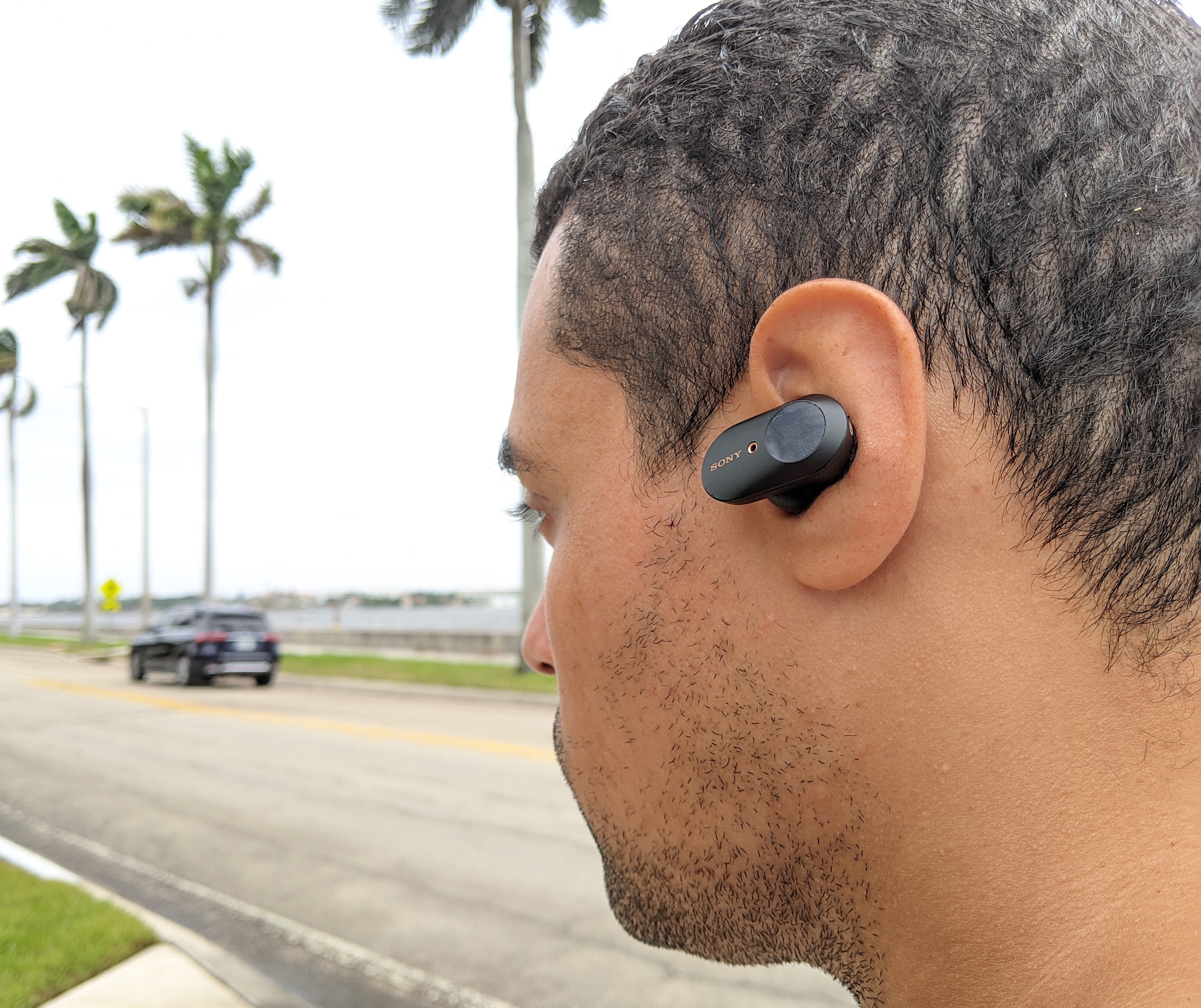
The Transparency Mode on each model works well, letting you control the amount of external noise you want to hear. It comes in handy for those who want complete awareness of their surroundings or to communicate clearly during brief encounters without removing the buds. Bose’s version is superior due to the company’s powerful mic array, which makes ambient noise sound more natural.
Winner: Bose QuietComfort Earbuds.
Bose QuietComfort Earbuds vs. Sony WF-1000xM3: Audio quality
There are maybe one or two models that can match the WF-1000xM3’s sonic prowess, and the QuietComfort Earbuds isn’t one of them. That’s not to say Bose’s buds aren’t of quality. Sony just has more firepower underneath the hood, in particular, the QN1e chip, which creates a boom-bastic soundstage with clean mids and highs, and upscales compressed files to treat listeners with hi-res audio.
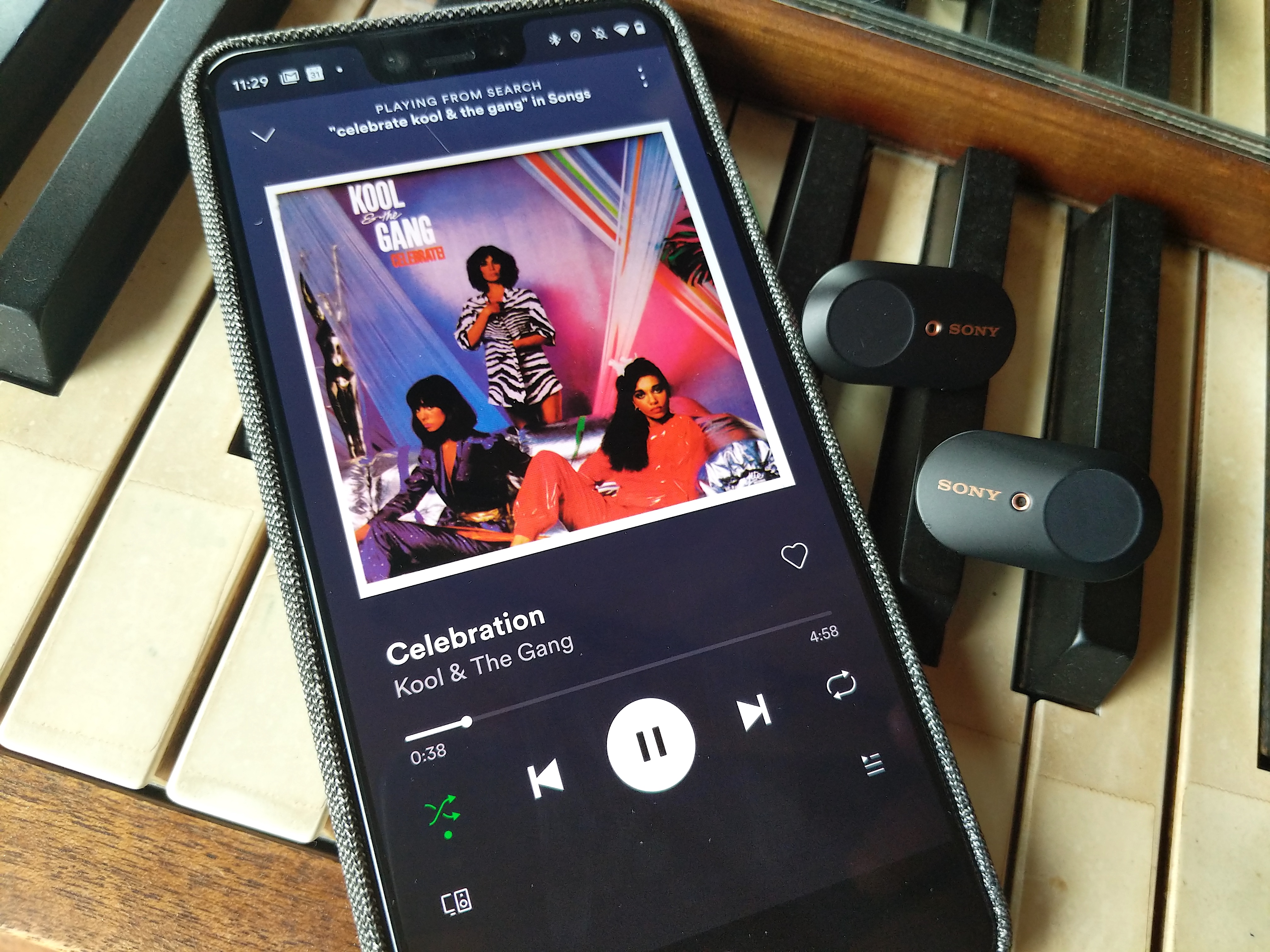
Kool & The Gang’s “Celebration” evoked good vibes on the WF-1000xM3, reproducing the track’s upbeat production with finesse. Percussive elements like the bass drum and cymbals are accentuated, feeding your ears extra oomph minus any distortion. The results are even grander on bass-heavy compositions like The Dream’s “Rockin’ That Sh*t,” which swarms in 808s and synth effects that overshadow the singer’s vocals. At least that’s what you hear on other earbuds, but not these. The WF-1000xM3 opens up the soundstage for Mr. Nash’s harmonies to shine over an emphatic, clear-sounding bassline.
The QuietComfort Earbuds use a similar frequency curve to the Bose 700, with Bose employing its Active EQ technology and proprietary drivers to pump out warm, pleasant audio. You get the best feel for this on orchestral recordings; my personal recommendation is Jazz records. Ahmad Jamal’s “The Awakening” is a serene listen that highlights the melodic double bass and piano play beautifully, along with background instruments like the hi-hat, showcasing how well the buds capture subtle nuances. However, Bose’s signature gets a bit overzealous with the low end, hindering clarity on certain songs. D’Angelo’s “Devil’s Pie” doesn’t hold back on the boom-bap-ness that every ‘90s hip-hop fan savors, but there are moments where heavy thumps veil the mids, making it difficult to hear verses clearly.
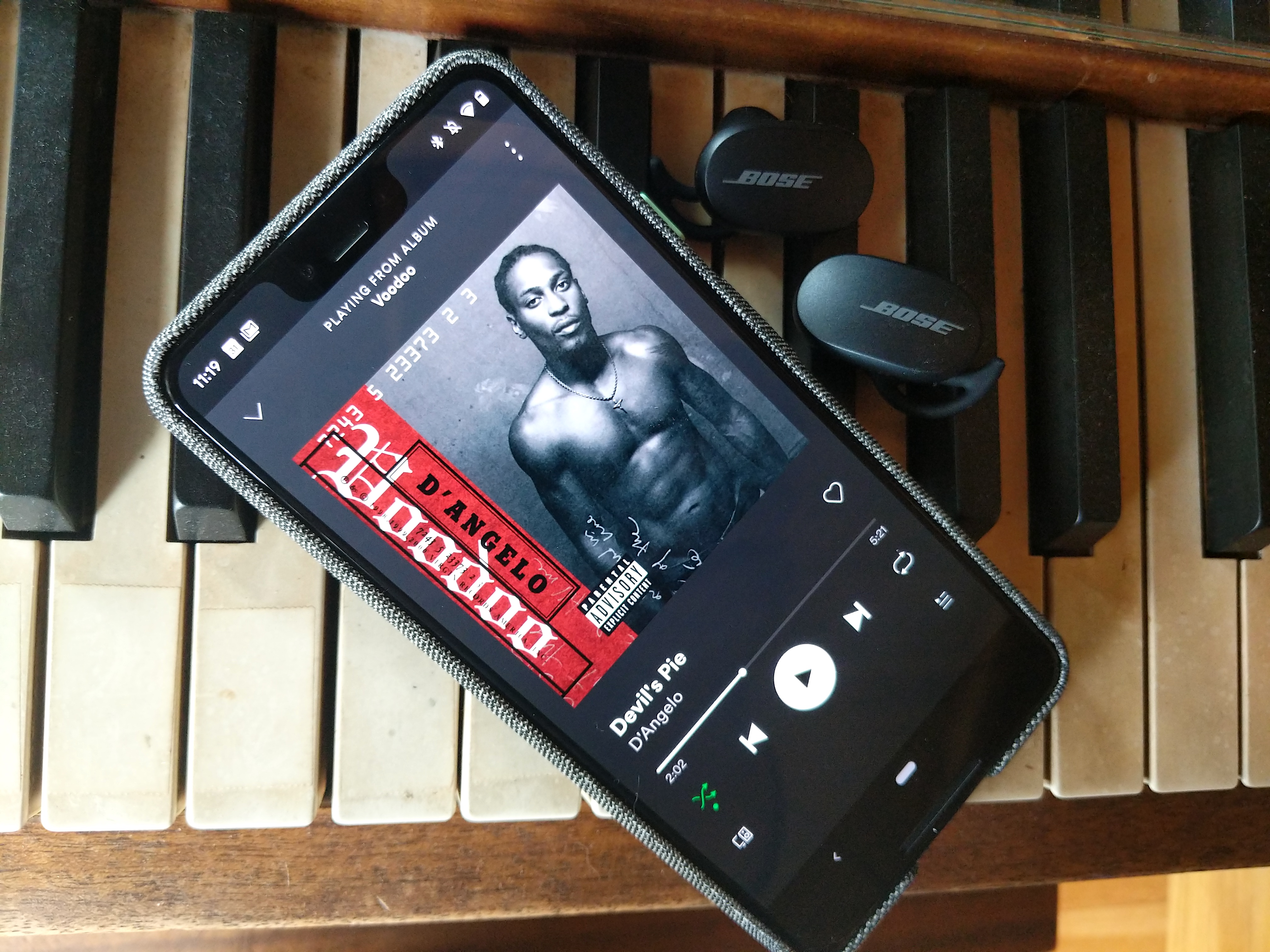
Turning ANC on will give both models a slight boost in bass. At the same time, you can turn it off and enjoy great passive isolation on either set of buds. Bose and Sony’s ear tips create tight seals around your ears, so you’ll be able to hear music in full.
Winner: Sony WF-1000xM3.
Bose QuietComfort Earbuds vs. Sony WF-1000xM3: App and special features
The Sony Headphones Connect app is awesome and gives you a plethora of features to play with. It starts with the built-in EQ that you can either set to one of 9 different presets, which lend themselves well to specific content (e.g. music, movies, podcasts), or tweak manually to create your own sound profile. There is even a Sound Quality mode to prioritize between sound or connectivity; the latter is recommended when dropout occurs consistently.
You should definitely check out Adaptive Sound Control. It works with the acceleration sensor on your smartphone to automatically switch between ANC and Transparency Mode based on four behavioral patterns: Staying, Walking, Running, and Transport. The feature can even learn and save your most frequent locations. Ideally, listeners will want full control of ANC or Transparency Mode, but Adaptive Sound Control does the leg work for you and will automatically enable ambient listening when entering settings that require it. How innovative.
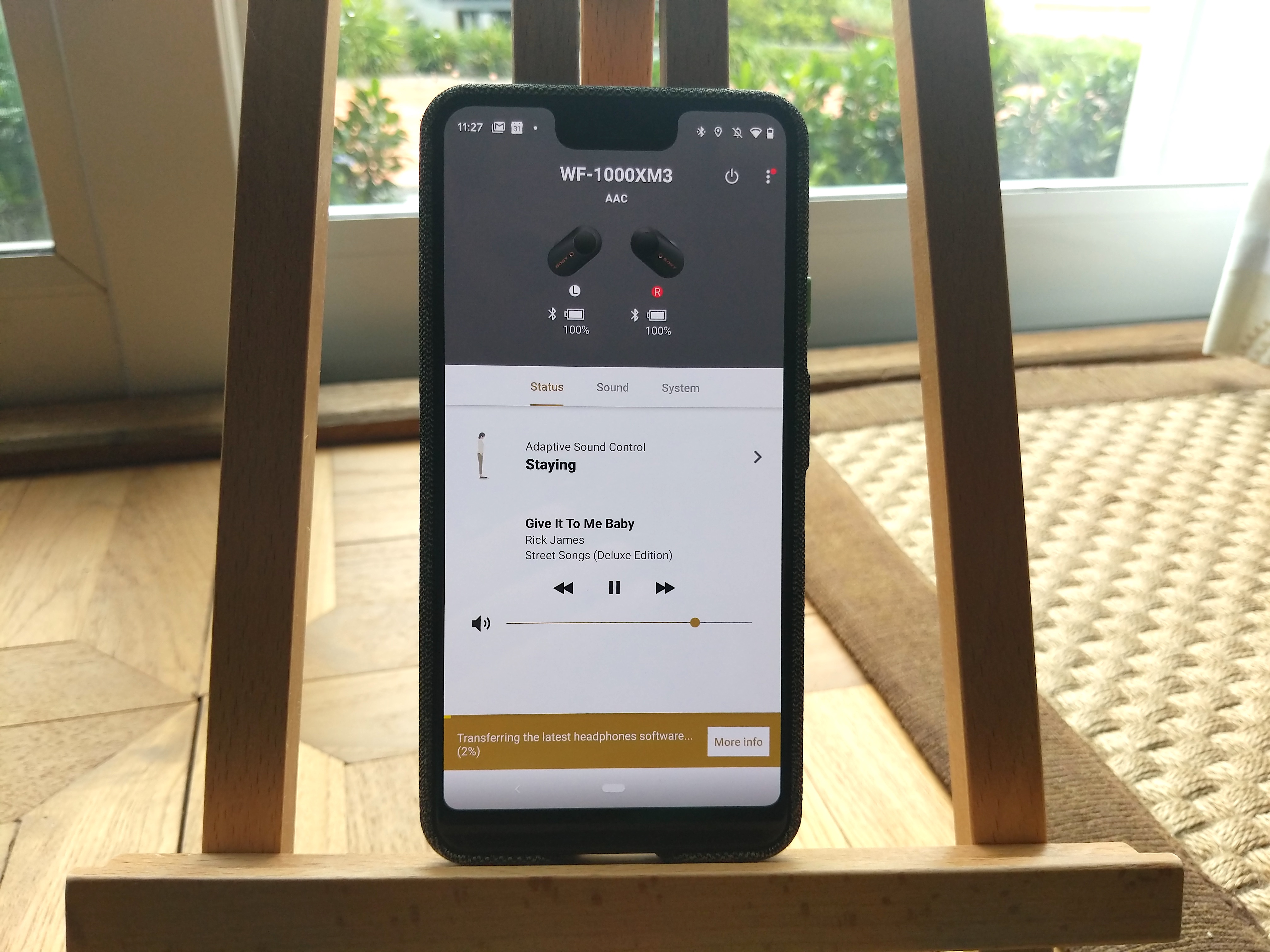
There are other standard features available, including battery level indicators for each bud and the charging case, playback controls, numerous toggles, and a slider to adjust 20 levels of ambient sound.
The Bose Connect app looks clean and has its own set of useful tricks, but they’re limited. You can manually adjust noise cancellation via a slider and set your three favorite ANC levels to cycle through directly on the buds. There is also the option to assign a shortcut (e.g. battery level indicator, skip forward) for the left earbud. Other notables include toggle controls for on-ear detection, voice assistance, and voice prompts. Self Voice is the feature that stands out most, so you can manage how loud you sound on phone calls.
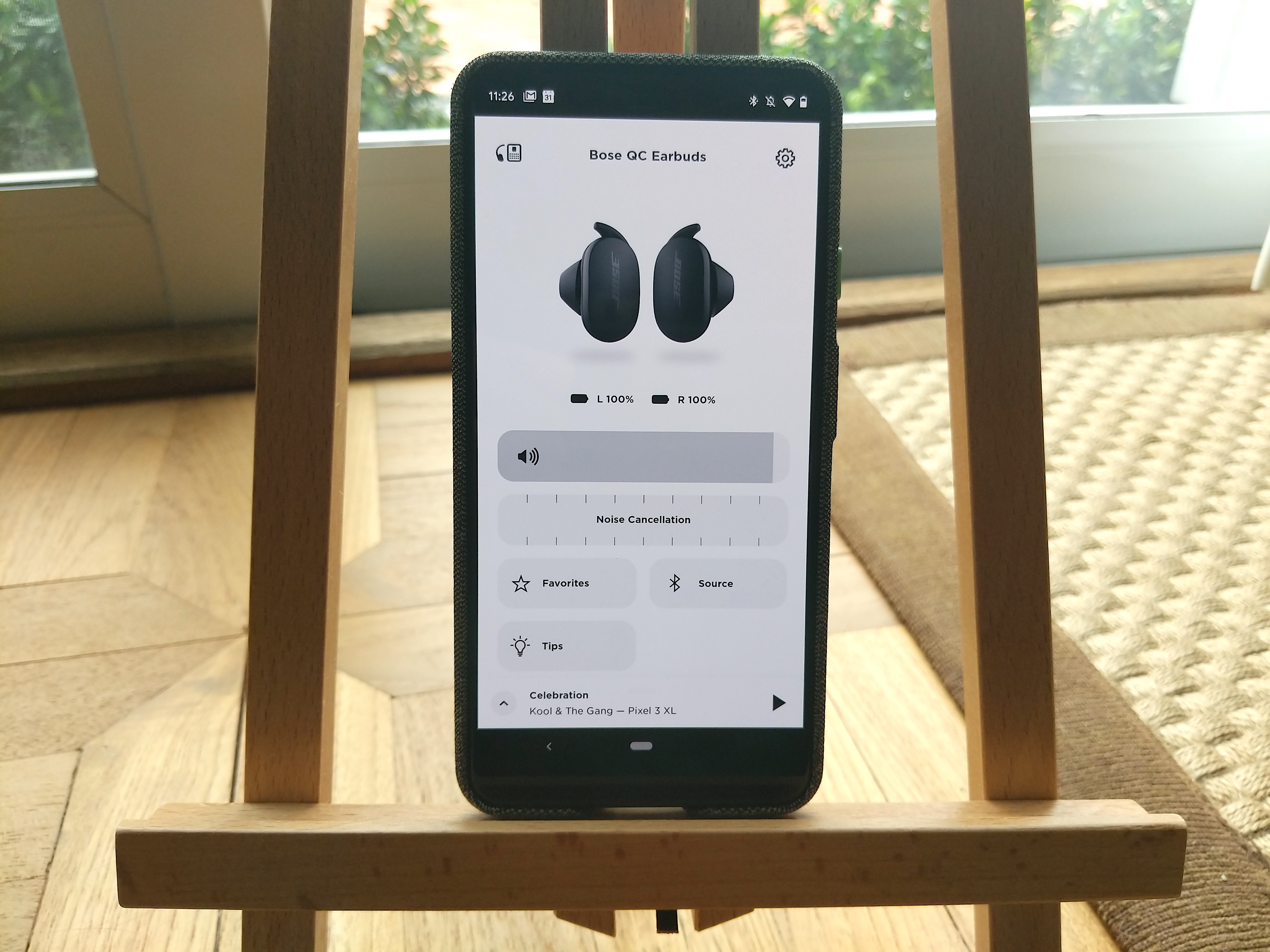
Unfortunately, Bose chose to keep two features exclusive to the Bose 700: Auto-Off and the adjustable EQ to fine-tune bass, mids or treble. This would have definitely enhanced the sound on the QuietComfort Earbuds.
Winner: Sony WF-1000xM3.
Bose QuietComfort Earbuds vs. Sony WF-1000xM3: Battery life and charging case
Sony’s in-ear monitors not only generate longer playtimes, but they also come programmed with better battery management. A full charge is advertised at 6 hours, but it’s really more like 5.5 hours when factoring in Spotify listening, high volume, and ANC; turning off ANC gives you 7.5 hours. The companion app has an Automatic Power Off function that places the buds in sleep mode when inactive to preserve battery life and there is a Power Off button on the home screen if you want another way to turn off the headphones.
Bose’s earbuds share the same playtime (5.5 hours) on a single charge, though there is no option to turn off ANC. This is where quick charging is clutch, getting you 2 hours on a 15-minute charge, but the WF-1000xM3 isn’t that far behind with a 10-minute charge equaling 1.5 hours of playtime.
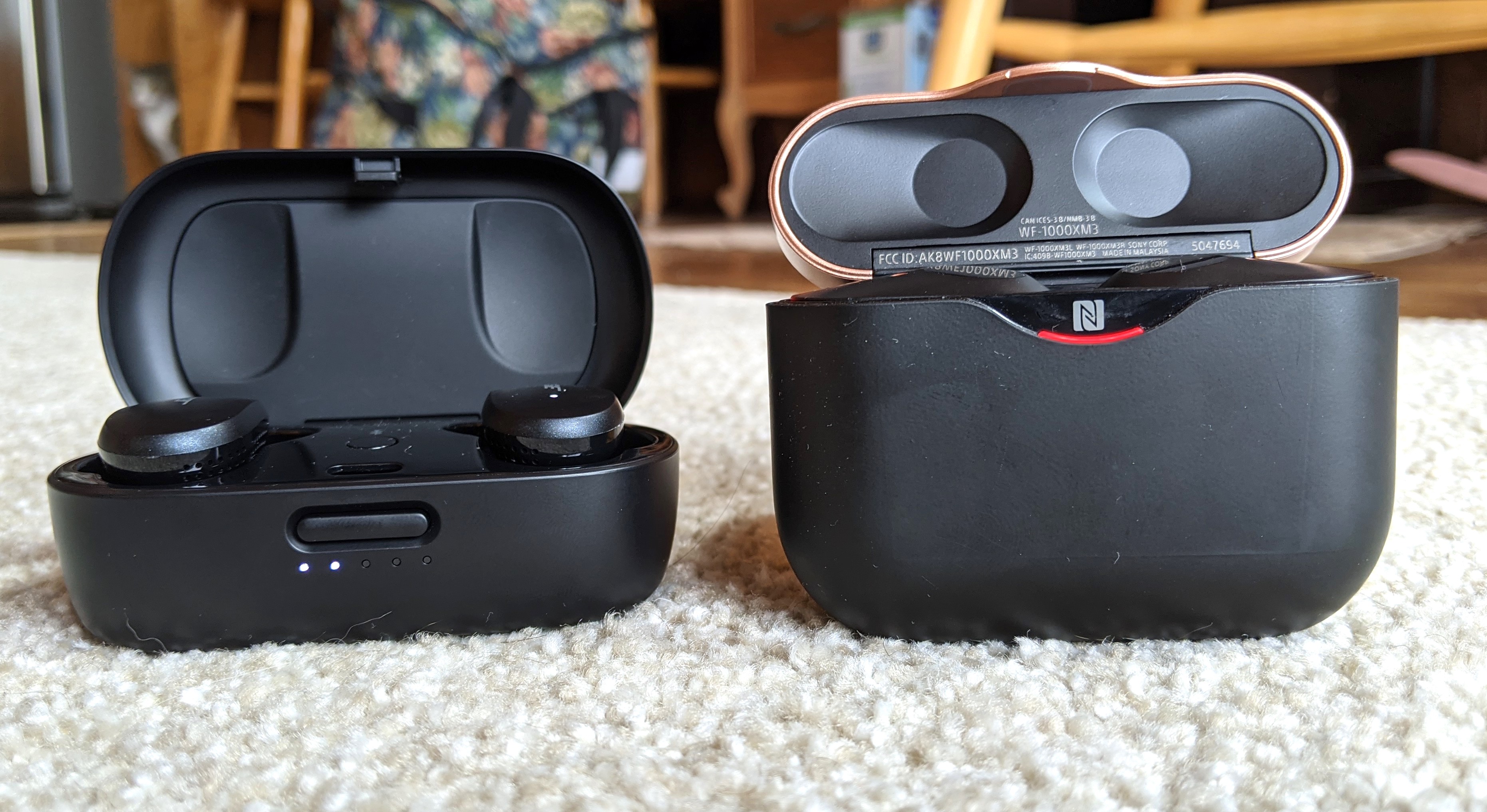
You would think the larger charging case boasts more portable power, yet Bose proves this theory wrong, with the QuietComfort Earbuds case holding only 18 hours (3 extra charges). This is lower than any of the AirPods cases and the WF-1000xM3’s case (24 hours). The one plus about the QuietComfort Earbuds is that they support wireless charging, meaning you can juice them up cable-free by placing the charging case atop any Qi-certified wireless charger.
Winner: Sony WF-1000xM3.
Bose QuietComfort Earbuds vs. Sony WF-1000xM3: Call quality and connectivity
This is the one category where Bose crushes Sony, as the QuietComfort Earbuds are universally recognized as the best calling headset in the category. Everyone I spoke with complimented how loud and clear I sounded, even in drafty settings, which is a testament to how great wind resistance is on these buds. I was surprised by the clarity and crispness that was present on each call, which made Zoom chats more fun.

Refrain from making calls on the WF-1000xM3 because the mics do a poor job of blocking out distractions. My wife could immediately tell when I was talking outside and picked up on several noises, especially wind, which created an unpleasant blustering noise. Some of the other complaints shared were that my voice sounded low, muffled, and cut out several times.

Bluetooth 5.1 gives the QuietComfort Earbuds an edge on the wireless front. Pairing to devices was automatic and the buds provided a steady wireless range (35 feet) to stream music several feet away from my audio source. Getting the WF-1000xM3 to re-connect with devices or access the app became common hassles due to some bugs. NFC was convenient for tap-to-pair functionality with Android devices, but the Bluetooth button on the QuietComfort Earbuds’ case was the more reliable option for instantaneous pairing.
Winner: Bose QuietComfort Earbuds.
Winner: Bose QuietComfort Earbuds
Per category, you can see the Bose QuietComfort Earbuds are the more evenly balanced option and superior noise-cancelling solution. Bose did a killer job implementing its ANC circuitry into such a compact design, nearly replicating the noise-cancelling capabilities of its flagship headphones. The only thing more impressive is call quality, which the AirPods Pro can’t even match, and that’s a pretty high standard. Toss great sound, strong connectivity, and wireless charging into the mix, and Bose’s latest creation is the clear winner.
| Header Cell - Column 0 | Bose QuietComfort Earbuds | Sony WF-1000xM3 |
|---|---|---|
| Value (5) | 3 | 5 |
| Design (15) | 11 | 11 |
| Controls (10) | 8 | 6 |
| Active noise cancellation (20) | 20 | 18 |
| Audio quality (15) | 12 | 15 |
| App and special features (15) | 11 | 13 |
| Battery Life and charging Case (10) | 7 | 8 |
| Call quality and connectivity (10) | 10 | 5 |
| Total Score (100) | 82 | 81 |
For a model that has been on the market over a year, it’s still shocking to see how well the Sony WF-1000xM3 performs as a noise-canceller. These buds helped set the standard for ANC on truly wireless earbuds, and it remains precedent by the amount of ambient sound they keep out. Audio is the model’s greatest strength, delivering strong, energetic sound that can be customized through Sony’s app, though everything sounds great right out of the box. All of the extra features are a strong sell as well.
You would be remiss to pass up the WF-1000xM3 when on sale, especially if sold for under $200. But if money is no object and you want category-leading noise cancellation, you’ll want to spend the extra bucks on the QuietComfort Earbuds.
Alex Bracetti writes about all things related to audio at Laptop Mag. From insightful reviews of Sony earbuds to hands-on experience with the Beats Studio Pro, Alex covers everything you need to know in order to buy the best pair of headphones or earbuds. Alex has also written about speakers and audio apps. Outside of Laptop Mag, Alex's work has appeared in our sister site Tom's Guide.
